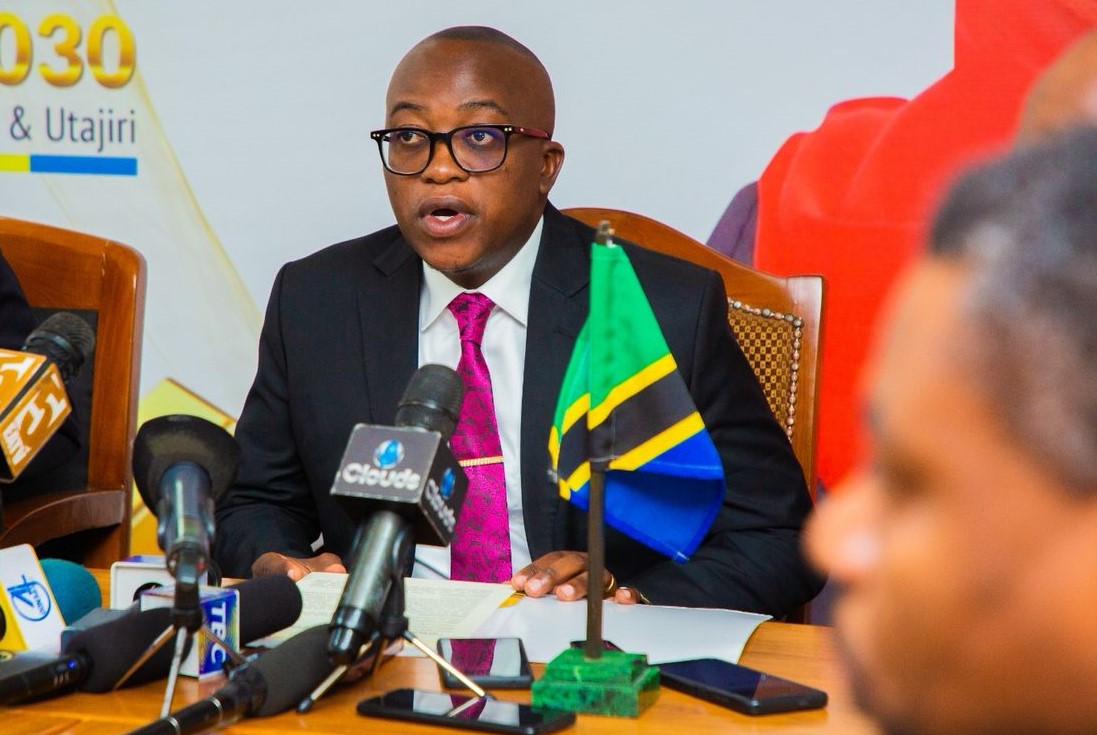Prime
Mining beats 10 percent GDP target a year earlier

Minerals minister Anthony Mavunde addresses a news conference in Dodoma on April 23, 2025. PHOTO | COURTESY
What you need to know:
- Minerals minister Anthony Mavunde attributes the growth to sweeping reforms, strong institutional oversight and the strategic leadership of President Samia Suluhu Hassan
Dodoma/Dar es Salaam. Tanzania’s mining sector has surpassed expectations, contributing 10.1 percent to national gross domestic product (GDP) in 2024—one year ahead of the government’s target set in the Mineral Policy of 2009 and the current Five-Year Development Plan.
Speaking in Dodoma on Thursday, Minerals minister Anthony Mavunde attributed the growth to sweeping reforms, strong institutional oversight and the strategic leadership of President Samia Suluhu Hassan.
“This is a historic achievement. The goal was to reach 10 percent contribution by 2026. We are proud to have achieved this ahead of schedule,” he said during a news briefing.
Analysts have lauded the government’s reform efforts but caution that maintaining this momentum will require targeted strategies, including boosting local investor participation and expanding value addition in mineral processing.
“This growth stems from extensive work by the government,” said Mr Humphrey Simba, a mining expert at ASNL Advisory Limited. “But to ensure continued progress, we must attract more domestic investors in areas like graphite, nickel, copper and coal.”
Mr Simba noted the continued rise in global gold prices as a catalyst for sector growth. He emphasised the potential for value addition, arguing that refining and processing minerals locally could generate over $1 billion in new business opportunities.
Gold prices have climbed by 88.12 percent over the past six years, from an average of $1,269.23 per troy ounce in 2018 to $2,387.70 in 2024. This surge has been fuelled by investors seeking safe-haven assets amid global economic instability and geopolitical tensions, including the Covid-19 pandemic, the Russia-Ukraine war, Western sanctions on Moscow and recent conflict in Gaza.
According to the Bank of Tanzania (BoT), gold prices spiked further this week—from Sh8,899,135 (approximately $3,324.71) per troy ounce on April 22 to Sh9,215,483 (about $3,443.47) on April 23, a jump of Sh316,348 (around $118.18).
Independent financial analyst Oscar Mkude said recently that the surge reflects global economic anxiety.
“People are concerned about inflation and the value of their money. Gold is seen as a safer store of wealth,” he told The Citizen.
He added that Tanzania, as a gold exporter, stands to benefit—if it navigates the complexities of the global market.
“While there’s growing global demand, the gold market remains saturated and unpredictable. Buyers are cautious. Timing and market confidence are critical.”
To maximise returns, Mr Simba stressed the importance of value-adding industries.
“Most of our exports are still in the form of gold bars. Establishing more local processing facilities and jewellers would significantly raise our GDP share.”
He also highlighted untapped potential in minerals such as nickel and coal.
“Some mining sites are yet to commence operations. The government must expedite activity in these areas to diversify and strengthen the sector.”
Mr Simba added that coal plays a pivotal role in powering industry and electricity generation, underlining the need for ongoing exploration and investment.
Tanzania Chamber of Mines executive secretary Benjamin Mchwampaka pointed to improved investor sentiment.
“Reforms have created a favourable environment for both local and foreign investment, from exploration to refining,” he said.
These sentiments were echoed by Mr Shida Zakria, owner of Zasco Mining Society in Kahama. He praised government reforms supporting small-scale miners.
“We now contribute 40 percent of mining revenue and work side by side with large-scale operators,” he said.
Mr Zakria said that better market conditions and regulatory support have improved gold purity and pricing.
In 2023, the sector contributed 9.1 percent to GDP.
Mr Mavunde said the rise in 2024 is due to sustained reforms, including the establishment of gemstone auctions, local mineral markets and buying centres and enhanced anti-smuggling measures.
A significant contributor has been the Bank of Tanzania’s direct involvement in the gold market. As mandated under Section 59 of the Mining Act (Cap. 123), the BoT has been purchasing up to 20 percent of gold produced by small-scale miners.
Since July 2024, it has acquired two tonnes of gold, with a target of six tonnes by the end of the financial year.
“Legal and institutional reforms have increased transparency, compliance and efficiency. Productivity across all segments of the sector, particularly among small-scale miners, has improved considerably,” Mr Mavunde said.
He urged all stakeholders to comply with the Mining Act and reaffirmed the government’s commitment to building a regulatory framework that ensures sustainability and profitability.
“The mining sector is not only vital for economic growth, but also a key source of foreign currency, employment and community development.”



